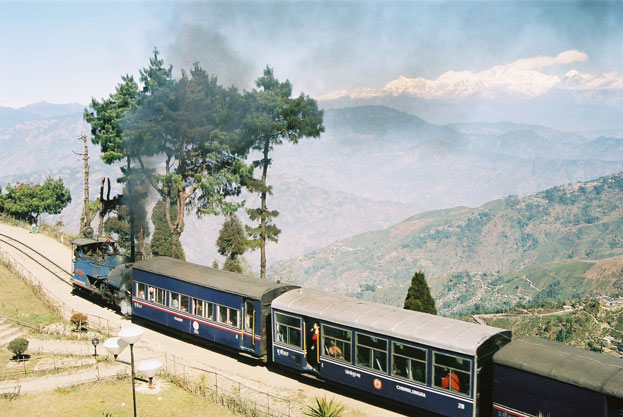The Beauty of Mountain Railways in India heritage property includes three railways. The Darjeeling Himalayan Railway was the first, and is still the most outstanding, example of a hill passenger railway. Opened in 1881, its design applies bold and ingenious engineering solutions to the problem of establishing an effective rail link across a mountainous terrain of great beauty. The construction of the Nilgiri Mountain Railway, a 46-km long metre-gauge single-track railway in Tamil Nadu State was first proposed in 1854, but due to the difficulty of the mountainous location the work only started in 1891 and was completed in 1908. This railway, scaling an elevation of 326 m to 2,203 m, represented the latest technology of the time. The Kalka Shimla Railway, a 96-km long, single track working rail link built in the mid-19th century to provide a service to the highland town of Shimla is emblematic of the technical and material efforts to disenclave mountain populations through the railway. All three railways are still fully operational.
The development of railways in the 19th Century
The development of railways in the 19th century had a profound influence on social and economic developments in many parts of the world. The two Mountain Railways of India on the World Heritage List are outstanding examples of the interchange of values on developments in technology, and the impact of innovative transportation system on the social and economic development of a multicultural region, which was to serve as a model for similar developments in many parts of the world.The Darjeeling Himalayan Railway is intimately linked with the development of Darjeeling as the queen of hill stations and one of the main tea-growing areas in India, in the early 19th century. The densely wooded mountain spur on which Darjeeling now stands was formerly part of the Kingdom of Sikkim. It was adopted by the British East India Company as a rest and recovery station for its soldiers in 1835, when the area was leased from Sikkim and building of the hill station began, linked to the plains by road.











Touritor, is one of the best website for tour guide in india, there is no more hassle to find Private tour guides in India.
ReplyDeleteBook You are Best Tourist Guide in India with Touritor.
ReplyDeleteBest Tour Guides in India
Private Tour Guides India
Thank you for sharing this information.
ReplyDeleteBest Tour Guides in India
Tour Guides in India
Ghumo Kahin Bhi was established in the year of 2016 with the aim of emerging as a leading tour and travel agent in Manali. As a best tour operator in Manali, Himachal we offer best tour packages in and around manali, himachal or worldwide. Call 7807913686 or visit our website. view more:- Top Travel Agent in Manali
ReplyDelete